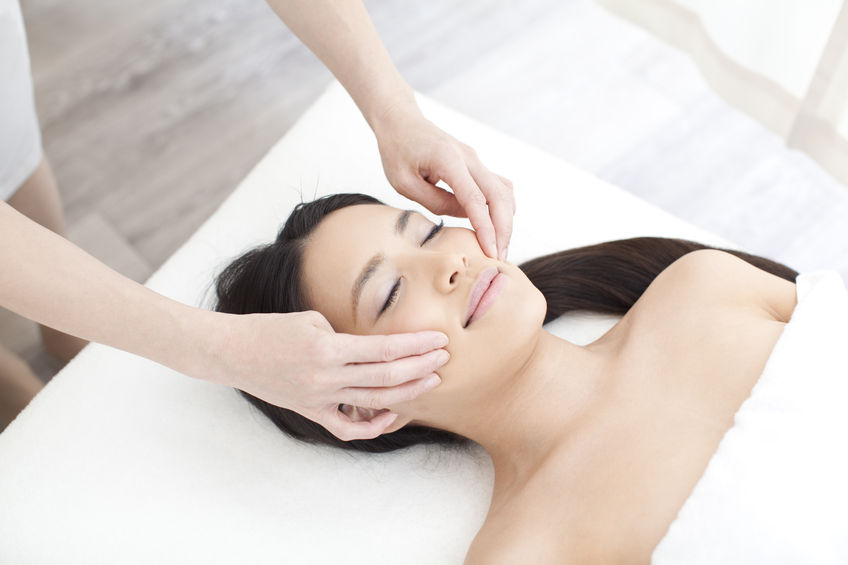
Defining Salicylic Acid For Clear Skin
Unlike some of the questionable acne remedies found on the internet, an exhaustive amount of research exists to support salicylic acid as an effective acne treatment, which is why this is probably not your first time hearing about the ingredient.
If you’ve ever dealt with acne, I’d be willing to bet you’ve even tried a salicylic acid-based product before. But because acne is a very complicated topic, there is no one-size-fits-all solution when it comes to treating it. So, to find out if salicylic acid will work for you, your skin type, or your type of acne, you first have to understand how it works.
All your questions about salicylic acid are about to be answered. Find out what makes the ingredient so impressive and how it contributes to clear skin!
What Is Salicylic Acid?
In the world of exfoliants, you’ve got more than a few options to choose from based on what your skin needs. Salicylic acid, an ingredient extracted from willow tree bark, is one type of chemical exfoliant called beta-hydroxy acid (aka BHA). Before explaining exactly how salicylic works, here’s a quick refresher on how breakouts form:
When bacteria, debris, sebum, and dead skin cells mix together, a clog forms inside your pores.
Unlike the chemical exfoliants called alpha-hydroxy acids (AHAs), which are water-soluble and ideal for surface exfoliation, salicylic oil is oil-soluble, which makes it capable of cutting through oil and exfoliating deep within your pores to remove blockages.
It works by increasing the amount of moisture in the skin and dissolving the substance that causes the skin cells to stick together. This makes it easier to shed the skin cells. It now makes sense why the ingredient is a longtime favorite for those with oily, acne-prone skin, right?
You might be most familiar with salicylic acid as an acne spot treatment, but the ingredient is also found in many other forms, like cleansers, toners, serums, and peels, which can all be beneficial to the skin in their own right. Each vehicle uses this acid in its own special way and is targeted for certain use in specific people, depending on their skin issues. The caveat is that some cleansers, peels, and toners can be too harsh and should be avoided.
The Benefits
Thanks to its unique properties, salicylic acid is used to treat a range of skin conditions outside of acne, from warts to dandruff. Here’s a breakdown of exactly how salicylic acid works to benefit the skin:
Exfoliates dead skin: It’s keratolytic, and as such, it encourages cellular turnover and helps to slough off dead skin cells, which in turn can improve skin dullness and texture.
Softens the contents of clogged pores: The oil-soluble ingredient is able to penetrate the pores, loosen the “glue” that causes the skin cells to stick together, and remove the contents of clogged pores that lead to superficial acne, like whiteheads, blackheads, and small red pimples.
Removes excess oil: It’s oil-soluble, it can penetrate beneath the skin’s surface to clean out excess sebum from the pores and reduce oiliness. This can, in turn, also lead to an improvement in the appearance of pores.
Prevents whiteheads and blackheads: Not only does salicylic acid treat existing breakouts, but because salicylic acid targets whiteheads and blackheads directly, it prevents them from returning to the surface level of your skin.
Reduces inflammation: It belongs to the same class of drugs as aspirin (salicylates). Because of salicylic acid’s anti-inflammatory properties, it helps to address irritation and redness related to breakouts.
Salicylic Acid vs. Benzoyl Peroxide
One ingredient that rivals salicylic acid’s popularity in the OTC acne treatment department is benzoyl peroxide. But this ingredient takes a different approach when targeting breakouts. While salicylic acid removes pore blockage, benzoyl peroxide is an antibacterial ingredient that kills the acne-causing bacteria inside the pores. Infamous for bleaching pillowcases and towels, benzoyl peroxide is also less suitable for sensitive skin than salicylic acid, as its drying properties can lead to flakiness and irritation.
Side Effects
Salicylic acid is best suited for those with oily skin and superficial acne. For those with dry, eczema-prone, or sensitive skin, the drying ingredient could be too harsh and lead to irritation.
Some of the most common side effects of salicylic acid include dry, burning, and overall irritated skin in the areas of application but adds that these side effects are more common at the start of treatment and should not continue.
Additionally, salicylic acid can make your skin more sensitive to sunlight and cause sunburn easily. Although you should always protect your skin from the sun, it’s especially important when using it to limit your sun exposure as much as possible and always use and reapply sunscreen.
How to Use It
The recommended concentration of a salicylic acid product varies from person to person and should be discussed with your dermatologist or aesthetician, and the same applies to how often you use it as a treatment. In general, use salicylic acid in moderation until you know your skin can tolerate it. Start off applying it every few days and take note of how your skin reacts after each application.
The key is to listen to your skin. If it’s getting irritated, you’ll need to take a day or two off and perhaps be a bit more vigilant with moisturizing. As far as the amount used, don’t do more or less, and don’t use it for longer than recommended. Apply just enough salicylic acid to cover the affected area and rub it into the skin gently.
Although its a common ingredient that’s easily accessible and found at the drugstore, a lot of variables are at play when it comes to using the acne-fighting ingredient to treat breakouts, so it should still be approached with caution. The use of salicylic acid depends on your skin type, the underlying indication, and how severe the acne is. While salicylic acid is a reliable option for treating superficial acne, prescription medications, like oral treatments, may be necessary for targeting cystic acne, so it’s best to have your skin evaluated to decide which treatment would be most effective. Incorporating salicylic acid isn’t a ‘one size fits all’ situation.
Next time you’re in for a facial at Botanica Day Spa, feel free to ask one of our amazing aesthetician’s about this acid and if it’s right for your skin type. We always love to recommend and put our client’s on the right path in buying skin care products that will have the best results for their skin, not just broadly for everyone. Call 727-441-1711 to book your facial today!
Love,
Gen



Leave a Reply